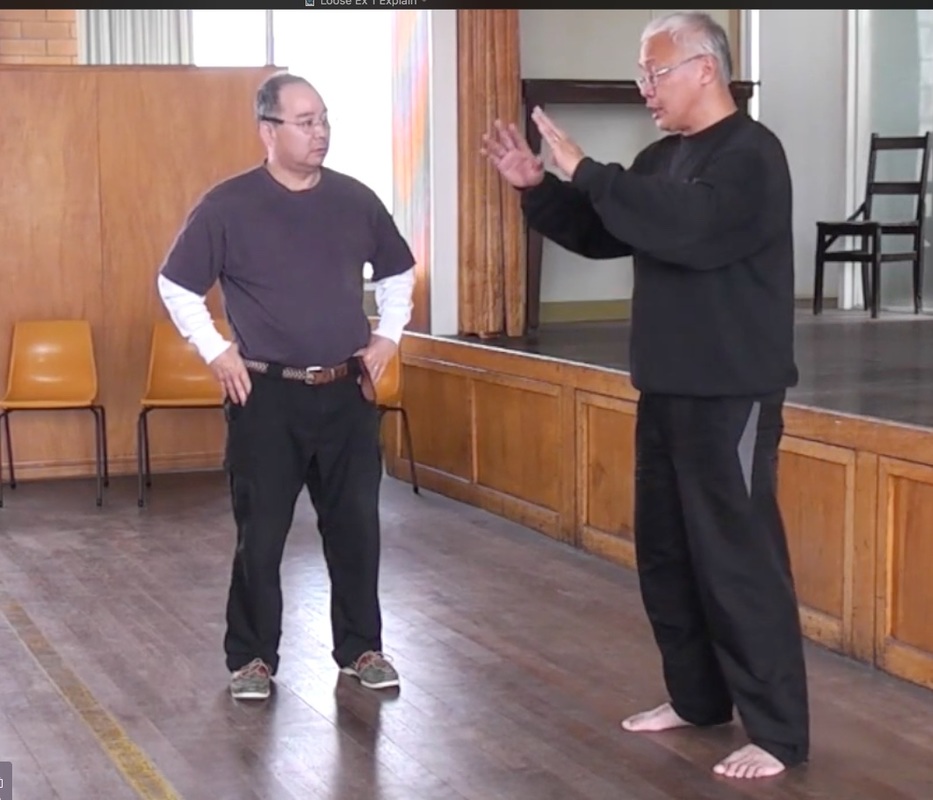T’ai Chi Ch’uan’s fixed-step pushing hands is a traditional, controlled, semi-structured application and testing of a T’ai Chi practitioner’s skills. It is a two-person exercise that allows you to practice and improve your T'ai Chi self-defense skills - ideally in a repetitive, gentle, mindful, slow, more relaxed and safe way.
Fixed push hands is great as it is not limited to the practitioner’s age, gender, or martial arts school and is traditionally done by many Tai Chi Ch'uan enthusiasts around the world in an informal and open gathering. It gives us a wonderful opportunity to meet and exchange with Tai Chi people from other schools as well as practitioners from different Martial Arts. I've met so many different people from push hands meet ups that in general it has been a very worthwhile experience .
However, it is very easy to fall well short of this ideal. Usually you see it degenerate quickly into an ego-defending, wrestling or shoving match where two bulls lock horns, each one strategically positioning themselves to control the centre to get ready for that final "shove." This isn't how T'ai Chi Ch'uan Masters of the past envisaged the practice of push hands, but it is completely understandable and I've been guilty of it many, many times.
In the past my experience of push hands was that of -
Stage 1/ Usually starting off with our barriers up - competitively analyzing each others' attitude, style and skill. The better? stronger? person is established quickly. Ego could be a dominant factor in striving to "win". Frustration could set in when our weaknesses are exposed or through the loss of face. I've been guilty of doubling-down on my stupidity at this stage - with embarrassing results. Alternately, we could be seduced by the shallow successes of our clever techniques and surreptitious use of leverage & muscle force (thinking we had mastered the advanced levels of Tai Chi "fah jing") - which is also equally ignorant - but who hasn't been there?
Stage 2/ Over several meets we get used to each other's "push" and our barriers begin to drop, we relax more, become more flexible, and begin to be better partners, listening more to each other and start to apply we we've been practicing into the contest. Then it becomes interesting and we start to really learn because we reflect on what worked and what didn't, we practice with clearer focus.
Stage 3/ Finally we even begin to help each other with advice or generously repeating a successful push for our partner giving them the opportunity to learn from their "loss." Here we start to merge our energies & relationship harmoniously & really make some progress - as long as we don't abandon the Tai Chi principles, and if we do then it is the case of: "the blind leading the blind" and we just solidify bad habits.
So taken in the right-enlightened spirit T'ai chi Ch'uan's push hands should be a subtle, self-reflective exercise, an enjoyable give & take exchange of Yin & Yang energies - the necessary next stage, a step-up from the solo practice for us seriously wanting to apply our T’ai Chi Ch’uan.
Fixed-Step Push Hands Format
There are variations depending on the context but in general the fixed-step push hands, begins where 2 people stand squarely opposite each other, front foot positioned forward on the same horizontal line with their partner. The position of their feet do not move as if glued to the ground. In this stationary position partner A gently rocks forward and "pushes" partner B (the intention is to "uproot" the partner's feet from the ground without resorting to “force”) and the other partner in response simultaneously "yields & neutralizes" his opponents "push." Then the yielder/neutralizer" becomes the person who pushes and the exercise becomes an ebb and flow - a back and forth of “pushing” and “receiving/neutralizing”. If the receiver isn't successful at “yielding & neutralizing” then the person pushing succeeds at “uprooting” the opponent off his/her fixed position. This exercise is done slowly, mindfully and gently in a relaxed/soft fashion with the emphasis on “sensing”, so that the participants can listen to the their movements, alignment and tension and hence better interpret the oncoming energies of their partner, thus improving their self-defence skill. Master Cheng Man Ch'ing preferred the term "Sensing Hands" instead of "Push Hands" which makes tremendous sense (pun not intended).
When I see this video (above) of myself doing push hands with a partner who is obviously a skilled martial artist, albeit having more of a background in Chinese Kung Fu than Taiji, I'm happy that I've followed my Teacher's subtle teachings and have progressed in the right direction. A video of you in action is a great reflective feedback tool on how you "thought" you were moving and how you were "actually" moving. On the positive side, I take a lot of satisfaction knowing that I've resolved quite a few bad habits, techniques and shallow attitudes that I' had been relying on for many years. And on the constructive side I can see quite a few fundamental things that I need to improve on, especially if I meet a more highly-skilled partner, but that is the challenge and half the fun.
So, if you are in the SE-QLD area, are like-minded enough to respect & follow the T'ai Chi Ch'uan fixed pushing hands format, contact me & join my regular fixed push-hands group for regular meet ups on Tamborine Mountain. It'll be great, call - 0420349744 or email me at [email protected].
Authour - Lee Chang Tye
www.relaxedmindtaichi.com

 RSS Feed
RSS Feed